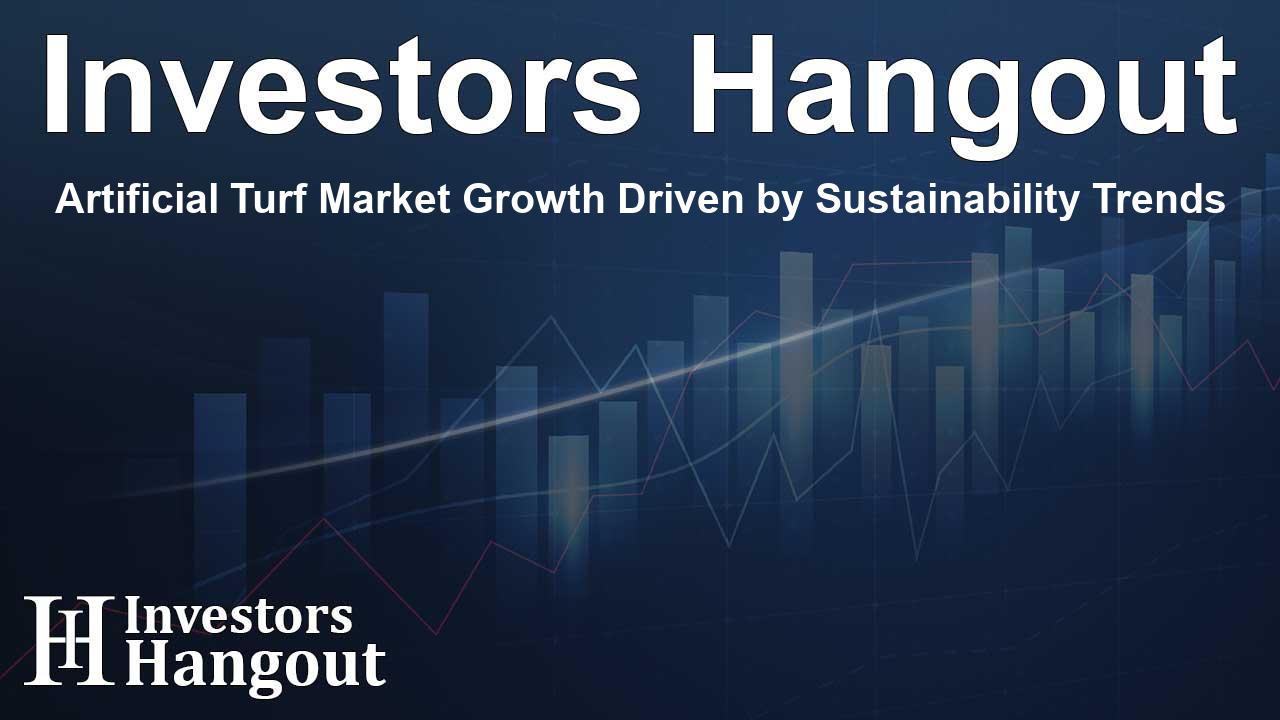Artificial Turf Market Growth Driven by Sustainability Trends

Artificial Turf Market Growth Driven by Sustainability Trends
The artificial turf market is on a remarkable growth trajectory, expected to reach a valuation of USD 6.3 billion in the coming years. Several factors are contributing to this expansion, including rising demand across various sectors such as sports, residential, and commercial landscapes. The durability and low-maintenance features of artificial turf have made it an attractive option for many consumers, and its eco-friendly attributes are gaining increasing attention.
Driving Factors Behind Market Expansion
Among the key drivers of this market growth is the significant investment in sports infrastructure. Governments and private entities alike are prioritizing the development of modern sports facilities. The use of artificial turf in these environments supports a sustainable approach to sports management while reducing operational costs associated with natural grass maintenance.
The Role of Urbanization
Urbanization is another critical factor driving the demand for artificial turf. As cities expand and available space shrinks, consumers are seeking alternatives to traditional landscaping. Artificial turf offers a solution for homeowners and businesses looking to optimize their limited outdoor spaces, such as balconies and rooftop gardens.
Technological Innovations Propel Market Dynamics
Technological advancements within the industry are playing a significant role in enhancing the appeal of artificial turf. For instance, new materials have been developed that not only improve aesthetics but also provide a safe and comfortable playing surface. Hybrid turf technologies are making significant strides, with the incorporation of shock pads and recyclable materials contributing to improved performance.
Environmental Benefits Add Value
Artificial turf also presents significant environmental benefits. It minimizes water consumption, eliminates the need for harmful pesticides, and contributes to long-term cost savings, making it an appealing choice for sustainable landscaping. As environmental consciousness grows, the appeal of artificial turf continues to increase.
Market Trends and Future Opportunities
The market landscape is evolving as more manufacturers focus on creating recyclable and biodegradable turf solutions. This shift aligns with global sustainability targets and presents opportunities for companies to innovate further. Customization options are also expanding, enabling businesses to tailor products to specific applications like playgrounds and indoor play areas, which could lead to increased market penetration.
Insights on Regional Market Development
Regionally, market demand for artificial turf varies with different growth rates. Developed nations see an increase in sports events that utilize artificial fields, whereas emerging markets are increasingly adopting turf solutions due to urbanization trends. For instance, the growth of hotels, restaurants, and airports globally is driving the demand for artificial turf applications in landscaping and aesthetics.
Key Challenges in the Market
Despite the growth potential, the market faces challenges such as regulatory restrictions concerning materials used in artificial turf, particularly infill materials. Stringent regulations in various regions may limit the use of certain synthetic components, posing a threat to market stability. Furthermore, fluctuations in raw material prices could affect profit margins across the industry.
Strategic Positioning for Industry Players
Manufacturers and stakeholders in the artificial turf market are encouraged to adapt to changing regulations and consumer preferences. Positioning within the sustainable product framework, fostering innovation, and aligning with environmental goals can enhance competitive edges. Brands that capitalize on green technology and prioritize eco-friendly practices are likely to emerge as leaders in this evolving market.
Frequently Asked Questions
What is driving the growth of the artificial turf market?
The growth is driven by increased demand from the sports, residential, and commercial sectors, along with sustainability initiatives and technological advancements.
How does urbanization influence the demand for artificial turf?
Urbanization leads to limited outdoor spaces, making artificial turf an attractive option for homeowners and businesses looking to optimize their landscaping.
What technological innovations are impacting the artificial turf market?
Innovations include hybrid turf technologies, shock-absorbing materials, and eco-friendly components that enhance performance and sustainability.
Are there environmental benefits to using artificial turf?
Yes, artificial turf significantly reduces water usage, minimizes pesticide reliance, and provides long-term cost benefits for sustainable development.
What challenges is the artificial turf market currently facing?
Challenges include regulatory restrictions on materials and fluctuating prices of raw materials affecting market stability.
About Investors Hangout
Investors Hangout is a leading online stock forum for financial discussion and learning, offering a wide range of free tools and resources. It draws in traders of all levels, who exchange market knowledge, investigate trading tactics, and keep an eye on industry developments in real time. Featuring financial articles, stock message boards, quotes, charts, company profiles, and live news updates. Through cooperative learning and a wealth of informational resources, it helps users from novices creating their first portfolios to experts honing their techniques. Join Investors Hangout today: https://investorshangout.com/
Disclaimer: The content of this article is solely for general informational purposes only; it does not represent legal, financial, or investment advice. Investors Hangout does not offer financial advice; the author is not a licensed financial advisor. Consult a qualified advisor before making any financial or investment decisions based on this article. The author's interpretation of publicly available data shapes the opinions presented here; as a result, they should not be taken as advice to purchase, sell, or hold any securities mentioned or any other investments. The author does not guarantee the accuracy, completeness, or timeliness of any material, providing it "as is." Information and market conditions may change; past performance is not indicative of future outcomes. If any of the material offered here is inaccurate, please contact us for corrections.